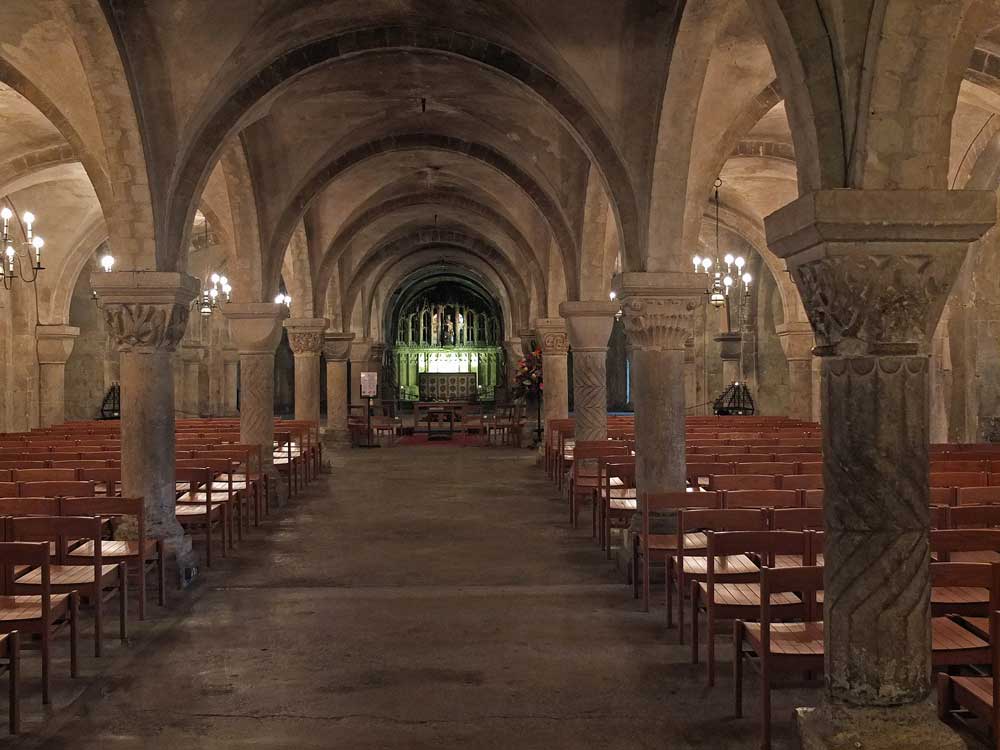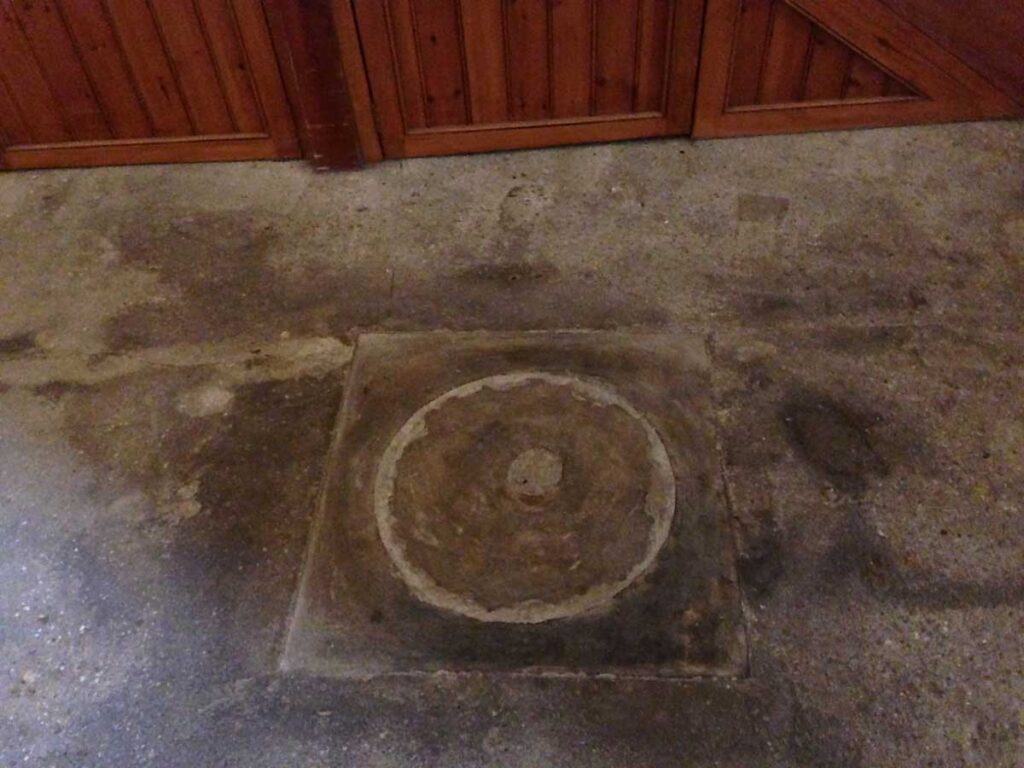The crypt of Canterbury Cathedral is 88 metres in length. The crypt was probably always an earthen floor, although the area around the tomb of Thomas Becket (before its translation in 1220) may once have been floored in stone.
In 1896, the architect Sir Arthur Blomfield reported that the well in the crypt had been covered with a circular stone which was fitted with a ring by which it could be lifted without difficulty. Today, a roundel can be seen in the floor of the crypt near to the east end (see image bottom right). If this is the same stone then at a later date the cathedral authorities have decided to seal the well. The depth of the well is not known. However, in 1974 the water table (within the porous Chalk bedrock beneath the cathedral) was found to be at a depth of four and a half metres, a level that could rise and fall in response to precipitation. The well is said to be that which was used by the medieval monks to fill pilgrim flasks (ampullae), often made from baked clay or lead, with holy water.
The crypt floor today is a blend of several concrete surfaces installed at different times during the twentieth century. A concrete floor provides a low maintenance dry surface.


Geoff Downer 2019
